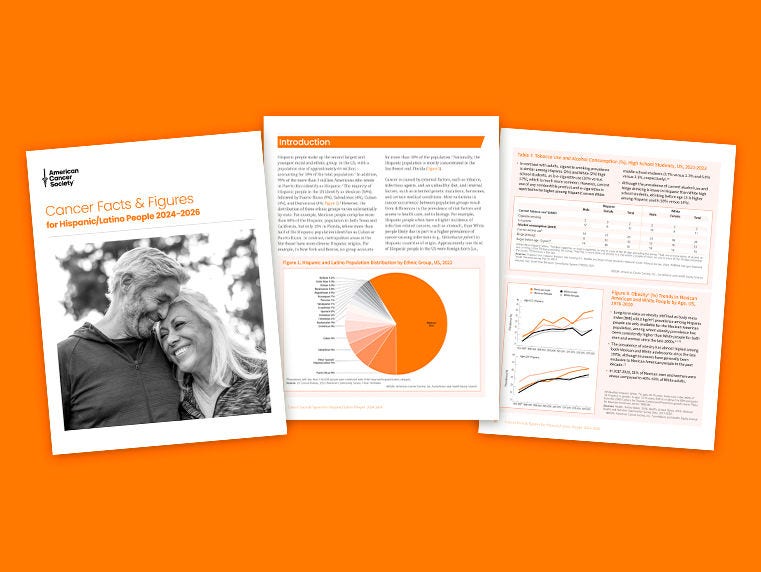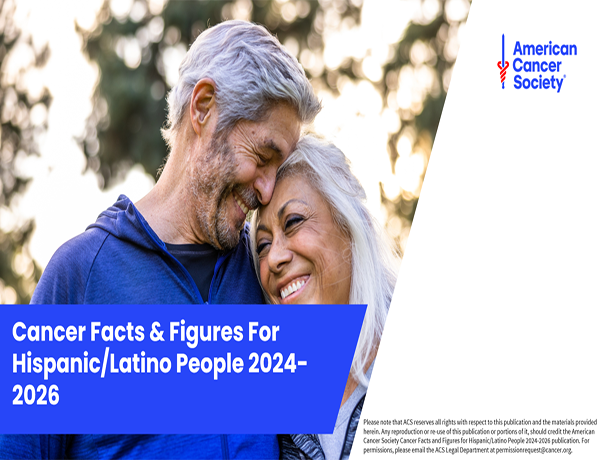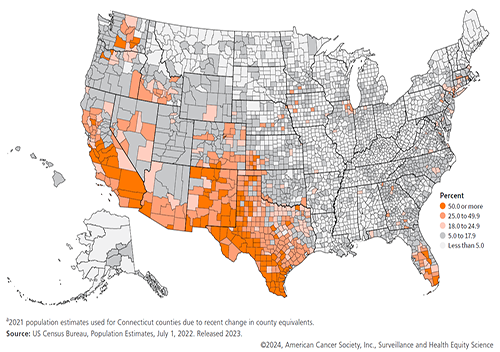Cancer Facts & Figures for Hispanic and Latino People
Cancer Facts & Figures for Hispanic/Latino People 2024-2026 is an educational report that provides statistics about the occurrence of cancer in Hispanic/Latino people in the United States and includes data about cancer prevention, risk factors, screening, and treatment for this population. An accompanying scientific article will be published in September 2026 in the American Cancer Society's CA A Cancer Journal for Clinicians.
According to 2023 estimates from the United States Census Bureau, 64 million Americans (19% of the population in the continental US and Hawaii) identified themselves as Hispanic or Latino. That number increases by another 3 million when the statistics include Hispanic/Latino Americans in Puerto Rico, a US territory. That makes the Hispanic/Latino population the second largest and youngest racial and ethnic group in the United States.
Cancer is the second leading cause of death among Hispanic people, accounting for 17% of deaths. Compared with non-Hispanic Whites, Hispanic men and women are:
* Less likely to be diagnosed with the most common cancers: lung, colorectal, breast, and prostate
* More likely to develop cancer in the liver, stomach, and cervix. These cancers are linked with infectious agents, such as HPV, and are largely preventable.
Citations, Credits, & Permissions
Suggested citation: American Cancer Society. Cancer Facts & Figures for Hispanic/Latino People 2024-2026 Atlanta: American Cancer Society, Inc. 2024.
Please note that any reproduction or re-use of this publication or portions of it should credit the appropriate edition of the American Cancer Society Cancer Facts & Figures for Hispanic/Latino People 2024-2026 publication. See the PDF contents page for more copyright info and permissions for use.
Glossary for Nonscientists
Featured Term:
Hispanic
A broad term that refers to people descended from Spanish-speaking countries or with ancesters from Latin America (South America, Mexico, Central America, and certain Caribbean islands, including Cuba, Jamaica, and others). The term Hispanic is more commonly used in the Eastern US and is generally preferred by those of Caribbean and South American ancestry or origin. Hispanic is considered an ethnicity, as Hispanic people can be of any race. See also Latino.






